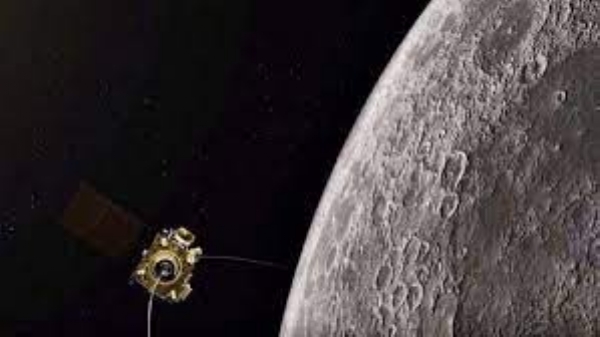Chandrayaan II - India's failed yet successful Moon mission
The spacecraft has detected the minor elements of manganese and chromium for the first time from the surface of the moon through remote sensing.
Total Views |
It has been now two years since India's unique and most ambitious mission Chnadrayaan II's spacecraft is revolving around the Earth's natural satellite. Yesterday India's second lunar mission's spacecraft, developed by the Indian Space Research Organisation (ISRO) completed more than 9,000 orbits around the Moon.
The mission was the result of India's thrust towards the moon. The main aim behind the Chandryaant II was to improve India’s s understanding of the Moon — discoveries that will benefit India and humanity as a whole. Another objective of the Mission was to study variations in lunar surface composition is essential to trace back the origin and evolution of the Moon.

However, the mission’s most ambitious part, Vikram Lander, which was supposed to land on the south pole of the lunar surface, crashed when it deviated from its intended trajectory due to a software glitch. That day every Indian got emotional when the agency's chief scientist K Sivan welled up in tears after India's first-ever attempt to land a rover on the moon appeared to have failed just moments before landing.
But remembering the quote of the APJ Abdul Kalam, "If you fail, never give up because failure means the first step in learning", ISRO got back in the force and tried to gain the information from the Chandrayaan 2 orbiter.
Like India’s maiden lunar mission, Chandrayaan-1, India's second lunar mission too successfully identified the presence of hydroxyl as well as water molecules on the lunar surface. The orbiter achieved this feat with the help of indigenous instrument Imaging infrared spectrometer (IIRS) that helps in differentiating between hydroxyl and water molecules. The discovery was significant for future projects on earth’s lunar surface.
After discovering the water minerals on the surface of the moon, the spacecraft achieved another significant success and detected the minor elements of manganese and chromium for the first time from the surface of the moon through remote sensing.
One of the sessions discussed payload results of Chandrayaan-2 Large Area Soft X-ray Spectrometer (CLASS) measures the Moon’s X-ray Fluorescence (XRF) spectra to examine the presence of major elements such as magnesium, aluminum, silicon, calcium, titanium, iron, and sodium. The discovery was a surprise as these elements are less than one weight percentage on the moon. The two elements, Chromium and Manganese, were detected at few places during the intense solar flare events.
It should be noted that NASA has already detected the presence of these elements on the lunar surface from a soil sample collected during their moon missions. However, unlike NASA, we didn't need soil samples of the lunar surface to gain information about it. Due to ISRO's high-tech sensors, we got the right information by only studying the data which was shared by the Chandrayaan II rover.
Though the Chandrayaan II got failed to land its Vikarm rover on the south polar region due to the technical failure, the orbiter with eight payloads onboard for mapping the lunar surface and the moon’s outer surface has been making India proud by successfully sending the valuable back data which is helping India to make discoveries. Through the Orbiter India has indeed achieved the crux of the mission.
.
.